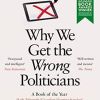7 Best-Selling The Cold War Books Millions Love
Discover best-selling The Cold War books recommended by Isabel Hardman, Casey Neistat, and Amrullah Saleh, blending expert insight with enduring reader appeal.





There's something special about books that both critics and crowds love, especially when it comes to the complex and nuanced history of the Cold War. These 7 best-selling titles have captured the attention of millions, offering insights into espionage, politics, and military strategy that remain relevant decades later. Their proven value lies not just in popularity but in the depth of understanding they provide about a world shaped by tension and ideological conflict.
Experts like Isabel Hardman, Assistant Editor of The Spectator, and Casey Neistat, filmmaker and co-founder of Beme, have championed these works for their vivid storytelling and meticulous research. For example, Hardman praises "The Spy and the Traitor" for its gripping portrayal of espionage, while Neistat appreciates its thrilling narrative. Meanwhile, Amrullah Saleh, Vice President Candidate of Afghanistan, highlights the importance of understanding intelligence operations detailed in these books.
While these popular books provide proven frameworks, readers seeking content tailored to their specific Cold War interests might consider creating a personalized The Cold War book that combines these validated approaches with your unique background and goals.
Recommended by Isabel Hardman
Assistant Editor, The Spectator; Radio 4 presenter
“Oh it’s a brilliant book isn’t it. Another one I was sad to finish.” (from X)
by Ben Macintyre··You?
After years of chronicling spies and secret missions, Ben Macintyre delivers a gripping portrait of Oleg Gordievsky, a Soviet insider turned double agent whose intelligence work significantly influenced the Cold War's final chapters. You'll gain a detailed understanding of espionage tactics, Cold War politics, and the personal sacrifices behind cloak-and-dagger operations, especially through Macintyre's vivid recounting of Gordievsky's London tenure and narrow escape in 1985. This book suits anyone fascinated by spycraft, Cold War history, or the intricate dance of international intelligence agencies navigating trust and betrayal under intense pressure.
by David E. Hoffman··You?
by David E. Hoffman··You?
David E. Hoffman brings his investigative journalism expertise to unveil the gripping story of Adolf Tolkachev, a Soviet engineer who became one of the most valuable spies for the United States during the Cold War. Through detailed accounts of covert meetings, secret codes, and high-stakes espionage, you learn how intelligence gathering shaped military strategy and diplomatic dynamics between superpowers. The book delves into Tolkachev's motivations and the intense risks faced by both him and his CIA handlers, providing a nuanced look at espionage beyond glamorized fiction. If you're drawn to true stories of espionage and Cold War history, this narrative offers a compelling blend of technical detail and human drama that deepens your understanding of that era.
by TailoredRead AI·
This tailored book explores the intricate world of Cold War espionage, revealing the covert operations and spy narratives that shaped global history. It examines the tactics of intelligence agencies, undercover missions, and key players, offering insights shaped by your specific interests and background. By focusing on your unique goals, it uncovers stories and techniques that resonate personally, deepening your understanding beyond general history. The book’s personalized approach combines well-known Cold War espionage knowledge with nuances that match your curiosity, allowing you to engage with the subject matter in a way that directly addresses your quest for detailed spy operations and compelling narratives.
John Lewis Gaddis, a prominent historian in Cold War studies, developed this book to unravel the complex factors shaping U.S. policy toward the Soviet Union during and immediately after World War II. You’ll gain insight into the interplay of domestic politics, bureaucratic inertia, and personal dynamics that influenced key Washington decision-makers beyond just economic reasons. Gaddis examines how perceptions of Soviet intentions and internal government quirks impacted the origins of the Cold War, providing you a nuanced understanding of this formative period. This book suits those fascinated by diplomatic history and political strategy, particularly anyone wanting to grasp the multifaceted origins of U.S.-Soviet relations during a critical era.
by Ronald E. Powaski·You?
by Ronald E. Powaski·You?
Ronald E. Powaski, drawing on decades of historical scholarship, presents a narrative that challenges common perceptions by tracing the Cold War’s origins back to early American and Russian expansionist ambitions. You learn not just the sequence of events but the deep-rooted psychological and political factors fueling the conflict: from the U.S. military's intervention in the Russian Civil War to the complex interplay of domestic politics and international diplomacy during the arms race. Chapters on key moments like the Marshall Plan and the Soviet nuclear tests reveal how each side’s actions escalated the rivalry. This book suits anyone eager to grasp how historical legacies shape global tensions and want a nuanced view beyond the usual Cold War summaries.
by John Pina Craven·You?
by John Pina Craven·You?
What started as John Pina Craven’s personal mission to safeguard the Navy’s nuclear deterrent evolved into a revealing chronicle of undersea Cold War confrontations. You gain a detailed look at the technical challenges behind submarine operations and the clandestine efforts that shaped nuclear strategy, including the Polaris missile system and deep-sea salvage missions. Chapters recount gripping episodes like diagnosing the Nautilus’s critical damage and tracking the Soviet sub that inspired The Hunt for Red October. This book suits you if you want a firsthand perspective on Cold War naval espionage and the intelligence battles beneath the ocean’s surface.
by TailoredRead AI·
This tailored book offers a focused journey through the pivotal developments and strategies that shaped the Cold War era. It explores major events, diplomatic maneuvers, and military tactics with clarity and depth, matching your background and interests. By addressing your specific goals, it reveals the complex geopolitical dynamics and ideological conflicts that defined this period. The personalized approach means the content aligns precisely with topics you want to understand better, helping you gain fast, meaningful insights. You'll engage with key Cold War themes such as espionage, diplomacy, and nuclear strategy, all curated to maximize your learning and historical comprehension.
by Richard Rhodes··You?
by Richard Rhodes··You?
When Richard Rhodes first set out to explore the hydrogen bomb's origins, he brought decades of expertise in nuclear history to a subject that shaped global politics for decades. This book details the scientific breakthroughs and political tensions behind the H-bomb's creation, revealing how it forged a nuclear stalemate through vivid accounts of key figures and events. You'll gain a nuanced understanding of the Cold War's strategic complexities and the profound impact of nuclear weapons development on international relations. If you're interested in the intersection of science and geopolitical strategy, this book offers rich insights grounded in meticulous research and storytelling that goes beyond mere technical details.
by John Earl Haynes·You?
John Earl Haynes challenges the common perceptions surrounding American communism during the Cold War by drawing on fresh evidence that reshapes understanding of that era. You’ll gain insight into not just the key episodes and personalities but also the broader implications of anticommunism as a political force in post-World War II America. The book carefully dissects how the American Communist Party posed a serious threat to the political landscape, offering you a nuanced view that moves beyond simple Cold War rhetoric. If you’re looking to deepen your grasp of Cold War history with a focus on ideological struggles within the U.S., this book offers detailed analysis backed by solid research.
Popular Cold War Strategies, Personalized ✨
Unlock expert-backed Cold War insights tailored to your interests and goals.
Trusted by thousands of Cold War enthusiasts worldwide
Conclusion
Together, these 7 books offer complementary perspectives on the Cold War, from the shadowy world of espionage in "The Spy and the Traitor" and "The Billion Dollar Spy" to the political and strategic analyses in "The United States and the Origins of the Cold War 1941-1947" and "The Cold War." They represent widely validated approaches that have helped readers grasp this complex era's many layers.
If you prefer proven methods, start with "The Spy and the Traitor" and "The Billion Dollar Spy" for captivating espionage stories. For deeper historical context, combine "The United States and the Origins of the Cold War 1941-1947" with "Dark Sun" to explore origins and nuclear strategy. Meanwhile, "Red Scare or Red Menace?" offers a valuable lens on ideological conflicts.
Alternatively, you can create a personalized The Cold War book to combine proven methods with your unique needs. These widely-adopted approaches have helped many readers succeed in understanding one of history’s most defining chapters.
Frequently Asked Questions
I'm overwhelmed by choice – which book should I start with?
Start with "The Spy and the Traitor" for a gripping, accessible introduction to Cold War espionage. It combines thrilling storytelling with expert insights, making it a popular entry point for many readers.
Are these books too advanced for someone new to The Cold War?
Not at all. Books like "The Cold War" by Ronald Powaski provide clear narratives suitable for newcomers, while others offer engaging stories that bring history to life without requiring prior expertise.
What’s the best order to read these books?
Begin with espionage-focused titles like "The Spy and the Traitor," then move to broader historical analyses such as "The United States and the Origins of the Cold War 1941-1947." This sequence balances thrilling stories with context.
Should I start with the newest book or a classic?
Both have value. Newer books often incorporate recent research and fresh perspectives, while classics provide foundational knowledge. For example, "The Billion Dollar Spy" offers a modern narrative, whereas Gaddis's work remains a key historical reference.
Do I really need to read all of these, or can I just pick one?
You can pick based on your interest. Each book stands strong individually, but reading multiple titles broadens your understanding, covering different angles from espionage to political history.
Can I get tailored Cold War insights without reading multiple books?
Yes! While these expert-recommended books are invaluable, you can also create a personalized The Cold War book that combines proven methods with your specific interests, saving time and focusing on what matters most to you.
📚 Love this book list?
Help fellow book lovers discover great books, share this curated list with others!
Related Articles You May Like
Explore more curated book recommendations






